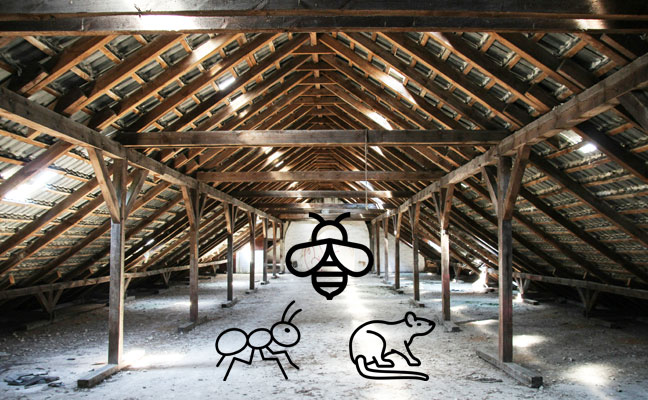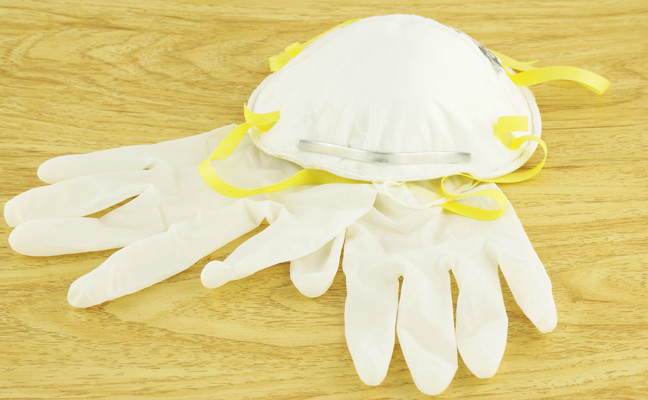Often viewed by homeowners as mere storage spaces, attics are highly attractive harborage sites for a wide range of pests. Their warm, quiet and undisturbed nature provides the ideal conditions for shelter, nesting and foraging. For pest management professionals (PMPs), regular inspection and targeted management of these top-floor spaces are essential to preventing infestations that can quickly spread throughout an entire structure.

Why pests love attics
Understanding the environmental factors that make attics so appealing is the first step in effective management. These spaces offer a perfect storm of conducive conditions that support pest survival and proliferation.
- Shelter and protection: Secluded and low-disturbance environments are ideal for nesting and overwintering, offering safety from weather extremes.
- Warmth: As heat rises, it collects in attics, creating a warm environment that is especially attractive during colder months.
- Accessibility: Vents, gaps around wiring, overhanging tree branches, and other structural vulnerabilities offer pests easy entry.
- Moisture: Roof leaks and poor ventilation can create the humid zones that many pests, including termites and cockroaches, favor.
- Nesting materials: Insulation, stored cardboard boxes, and old fabric provide an abundance of resources for building nests.
- Food sources: Attics can harbor a surprising amount of food, including dead insects, old rodent droppings, and other organic debris.
Safety and inspection protocols for PMPs
Working in attics presents unique challenges, including confined spaces, poor lighting, insulation hazards, and structural risks. Adhering to strict safety and inspection procedures is non-negotiable.
Personal protective equipment (PPE)
Before entering any attic, ensure you are equipped with the proper PPE to protect against environmental and biological hazards.
- Hard hat or bump cap to protect from overhead hazards like roofing nails and low beams.
- Gloves for handling potentially contaminated debris.
- Goggles or safety glasses to shield eyes from insulation fibers and dust.
- Respirator (N95 or higher) in areas with poor air quality or accumulations of pest droppings.

Essential inspection tools
A dedicated toolkit will allow for a thorough and efficient inspection of hard-to-reach areas.
- High-lumen flashlight with extra batteries is your most critical tool.
- Inspection mirrors and probes for investigating hard-to-see areas and voids.
- Knee pads for comfort and protection in low-clearance spaces.
- Utility knife, screwdriver and pliers for minor access adjustments.
- Camera or smartphone for thoroughly documenting all findings with clear photos.
Safe Access and Inspection Procedure
Your safety and the integrity of the structure depend on careful navigation and a systematic approach.
- Always use a stable ladder placed on level ground.
- Step only on joists or secured crawl boards. Never place weight on unsupported insulation or drywall, as this can lead to a fall.
- Follow a systematic pattern to ensure all areas are covered, moving from the entry point around the perimeter.
- Look for key signs of pest activity: droppings, nests, webbing, gnaw marks and live pests.
- Identify and document entry points, moisture sources and harborage sites.
- Take detailed notes and photos to support your findings and treatment plan.
Explore the full attic pest guide
This article is the central hub for our complete guide to attic pests. Dive deeper into specific control strategies for the pests you encounter most often.
- Attic pest guide (Part 1): Wood-destroying insects
- Attic pest guide (Part 2): common & fabric pests
- Attic Pest Guide (Part 3): Stinging & Fall-Invading Pests
- Attic Pest Guide (Part 4): Rodents & Wildlife
- Attic Pest Guide (Part 5): Birds & Associated Pests
- Attic Pest Guide (Part 6): 6 Reasons Why Pests Love Attics
Conclusion
Comprehensive attic pest management is a critical service that protects the entire home from infestation. It demands technical expertise, a solid grasp of pest biology and an unwavering commitment to safety. By mastering top-floor tactics, PMPs address complex pest issues, prevent recurring problems and reinforce the essential role they play in safeguarding client health and property.
Leave A Comment